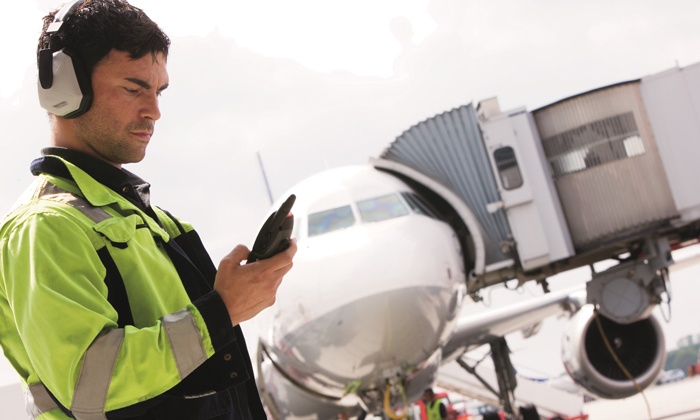Transforming secure communication platforms
- Like
- Digg
- Del
- Tumblr
- VKontakte
- Buffer
- Love This
- Odnoklassniki
- Meneame
- Blogger
- Amazon
- Yahoo Mail
- Gmail
- AOL
- Newsvine
- HackerNews
- Evernote
- MySpace
- Mail.ru
- Viadeo
- Line
- Comments
- Yummly
- SMS
- Viber
- Telegram
- Subscribe
- Skype
- Facebook Messenger
- Kakao
- LiveJournal
- Yammer
- Edgar
- Fintel
- Mix
- Instapaper
- Copy Link
Posted: 26 June 2018 | Patrick Bertini - Airbus | No comments yet
Being better connected and more secure, future multimedia services will play a crucial role for public transport. Sophisticated data exchange through the Internet of Things, insurance payments in case of delays, and ticket bookings in the blink of an eye – what sounds like the story of a distant future is based on mission-critical communications platforms that exist today. The missing link is the translation and integration into broadband services. Patrick Bertini, Transformation and Business Innovation Manager for Secure Land Communication at Airbus, explains how this can be achieved.


Credit: Airbus
The United Nations predicts that roughly 60 per cent of the world’s population will live in cities by the year 2030. This will have a tremendous impact on mobility: the most important metropolitan areas will find new means of moving people around – from the underground, through the sky (drone taxis and buses), on roads and rivers, pedestrian zones and green bicycle tracks. Measures to tackle environmental issues, such as pollution warnings to limit the carbon impact, will also play a major role. Urban transportation services will be complex systems where information is shared on numerous platforms – and often automatically steered.
As the population converges in cities across the globe, pressure builds on public transport to deliver secure and reliable services on time. For operators who have to organise mobility for millions, even the smallest disturbance can create large-scale problems for many people. Consequently, time-critical transportation companies need secure multimedia communication systems.
Making the best of existing communications infrastructure
Since the 1990s, public transport operators have been accustomed to using highly capable, secure communication systems mainly based on Tetra (Terrestrial Trunked Radio) standard and Tetrapol technology. Until now, these narrowband digital mission-critical networks have brought secure and reliable group voice and data communication.
Over the past few years, however, new opportunities to adopt the latest technology have arisen: a prime example is advanced broadband applications that transmit more information via videos, images or augmented reality to improve decision making in control rooms and elsewhere. These solutions require far more capabilities than standard narrowband systems can offer, but they must be absolutely secure. For this reason, a combination of narrow and broadband technologies is key in order to provide a full range of future communication services.
A pragmatic approach
The hybrid network is the most cost-effective method for the operation of a highly secure communication infrastructure equipped with multimedia tools. Transport companies can continue to communicate with their existing Tetra and Tetrapol networks and introduce mobile broadband services step-by-step. These services can be based on protected commercial services offered by secure mobile virtual network operators, which are specialised commercial operators with secure network capacities. This constellation of communication infrastructures offers a long-term benefit to transportation companies while bridging the existing gap of narrowband networks and future solutions.
Mobile broadband services can be used for broadband applications such as video, large data querying and data mining services, while voice and short data communications for crisis management will continue to be supported on the digital narrowband networks. Interestingly, the latter could be transformed into an invulnerable digital platform for the Narrowband-Internet of Things (NB-IoT). Thousands of sensors and devices connected with a public transport network could automatically provide passengers and control rooms with information to prevent delays and threats. Even the operation service will improve tremendously with all-encompassing information platforms.


Complex hubs such as airports need reliable communications systems to operate the daily traffic safely. Credit: Airbus
Key challenges and threats on broadband services
It is critical for network providers to ascertain the biggest challenges and threats facing public transport operators in the next decade. This is fundamental to creating an information system that accommodates future demands, both from public transport and large companies. Ahead of handling daily challenges, hacking assaults on IT-platforms, protection of sensitive data and legal uncertainties about data processing must be considered in order to improve urban transport services.
When it comes to customer service, looking ahead, new platforms will help manage processes more easily. Exchanging tickets or automatic insurance payments will happen automatically. Customers will no longer have to wait for weeks to receive their compensation payments, and instead will be paid immediately. Furthermore, operators will be able to promptly solve the technical problems of tracks and trains, thus eliminating delays, as a communications system will help to track down the source of failures within minutes.
Integrity, security, availability and reliability of secured solutions are the four mandatory pillars for any mission-critical service for public transport operators or any other operators. When incidents occur, transportation companies must respond in the blink of an eye to ensure the protection of human beings.
Finding the standards of tomorrow’s solution
How can suppliers bring together all these features on one unique hybrid security communication system?
To deliver a security communication platform for all kinds of present and future communication, the heart of the dedicated network needs to be integrated into a secure commercial mobile operator system. The transportation company will remain in control of the user data integrity. In addition, reliable and secure instruments need to be implemented, such as devices, base stations, servers and management systems. For instance, Tactilon Agnet, the Airbus mobile app for smartphones, can integrate smartphone users operating on broadband networks into Tetra or Tetrapol narrowband networks. This enables, for example, train drivers to send voice messages, videos, images and data to control rooms.
Moreover, using redundant broadband network capacities can enable a wider coverage to be achieved. When more than one secure mobile network is accessible, the overall connectivity and availability is improved. As a matter of course, the hybrid solution has to be fully compliant with the Third Generation Partnership Project’s (3GPP) achievements regarding future standards. This forum for the telecom industry is developing the standards in a document where all the required features for mission-critical communications will be available. Airbus is working together with its partners towards a standard solution for secure communication solutions for 5G.
Thinking about the future in the present
Investments in public transport over the past two decades will pay off with the integration of broadband into dedicated digital narrowband networks. This will raise the value of the operator’s infrastructure in the coming years, as more functions can be leveraged. This existing asset will be transformed as a secured digital platform to serve passenger security.
Imagine the year 2030: the operator’s control room managers have access to a huge amount of data in real time in order to optimise the complex coordination of trains and buses; sensors gather information on motor functions, temperatures, chemicals and potential weapons. The data will be automatically processed and the AI-based system triggers alarms to drivers, staff and control managers in case of malfunctions or real threats.
Permanent video surveillance in all vehicles helps to not only improve security but also adapt the operations immediately to increase the number of passengers. Drivers and staff in all locations will receive the same information as the control rooms owing to secure mobile multimedia applications on tiny devices. As a result, accidents, attacks and delays will be reduced to almost zero thanks to the resilient communications infrastructure.
Public transport in the year 2030 can be integrated into the smart city concept as part of the connected services delivered to urban citizens. The reality of next-generation communication in the world of transport is not that far away. The foundations will be laid very soon.
Biography


Related topics
5G & Transport Communications, IoT (Internet of Things), Traffic Management
Related organisations
Airbus, Secure Land Communications
Related people
Patrick Bertini








